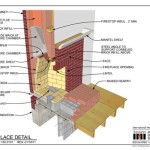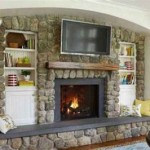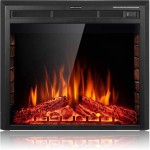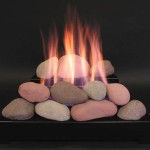Tudor Style Fireplaces: A Timeless Architectural Feature
Tudor architecture, with its distinctive half-timbered construction, steeply pitched roofs, and ornate decorative elements, has long been a source of inspiration for homeowners seeking a touch of history and elegance in their living spaces. A defining feature of Tudor homes is the fireplace, which not only serves a practical purpose but also adds character and charm to the room. Tudor style fireplaces are readily recognizable, boasting unique design characteristics that set them apart from other architectural styles.
Key Features of Tudor Style Fireplaces
Tudor fireplaces typically feature a large, imposing hearth, often made of stone or brick, and a massive chimney that dominates the room. The fireplace opening itself is often framed with a wide, arched mantle made of wood or stone. This mantle frequently incorporates intricate carving, including floral motifs, heraldic symbols, or scenes from mythology. The fireplace surround may also be adorned with decorative tiles, stained glass, or other artistic elements that further enhance the visual appeal.
The size and scale of Tudor fireplaces are a testament to the importance of fire in daily life during the Tudor period. Fireplaces served as the primary source of heating, cooking, and light, and were often used for other tasks, such as drying clothes or warming food. The generous dimensions of the fireplace allowed for large logs to be burned, providing warmth and light for the entire family.
The Importance of Materials
The materials used in Tudor fireplace construction were carefully chosen for both aesthetic and functional purposes. Stone was a common choice for the hearth and chimney, providing durability and resistance to heat. Wood, often oak or chestnut, was used for the mantle and surrounding trim, adding warmth and texture to the fireplace. Brick was also a popular material, especially in regions where stone was scarce. The combination of stone, brick, and wood creates a visually striking and texturally rich fireplace that complements the overall Tudor aesthetic.
Modern Adaptations of Traditional Design
While Tudor fireplaces are traditionally associated with historic homes, their timeless appeal has ensured their continued popularity in modern construction. Today, many homeowners choose to incorporate Tudor style fireplaces into their contemporary living spaces, adding a touch of history and character to their décor. Modern interpretations of Tudor fireplaces often incorporate modern materials such as steel, glass, and concrete, while retaining the classic architectural elements that define the style.
Modern adaptations may also incorporate innovative features such as gas log sets or electric fireplaces, providing both aesthetic appeal and convenient functionality. Regardless of the specific design elements, Tudor style fireplaces continue to be a sought-after feature in homes both old and new, adding warmth, charm, and a touch of history to any living space.

Tranquil Timeless Tudor Design Classic Serene 1920s Cottage Tour Now O Lovely Living Rooms Home Fireplace Room Remodel

Tudor Artisans Architectural Stone Fireplaces

Tudor Artisans Example Fireplaces Home Fireplace Back Porch Designs Dream House Family Room

Marble Fireplaces Majestic White Tudor Style Fireplace Mantel Mfp 817 Fine S Gallery Llc

Chesneys Chiswick Tudor Limestone Fireplace Surround Bonfire

Tudor Living Room Fireplace Style Homes With

This Updated Historic Tudor Revival Comes Complete With A New Rookwood Fireplace Candysdirt Com

Inspiration Chic Fireplaces 1 The Bohmerian

Marble Fireplaces Tudor Style Arabao Fireplace Surround Mfp 1994 Fine S Gallery Llc

1928 Tudor Revival








